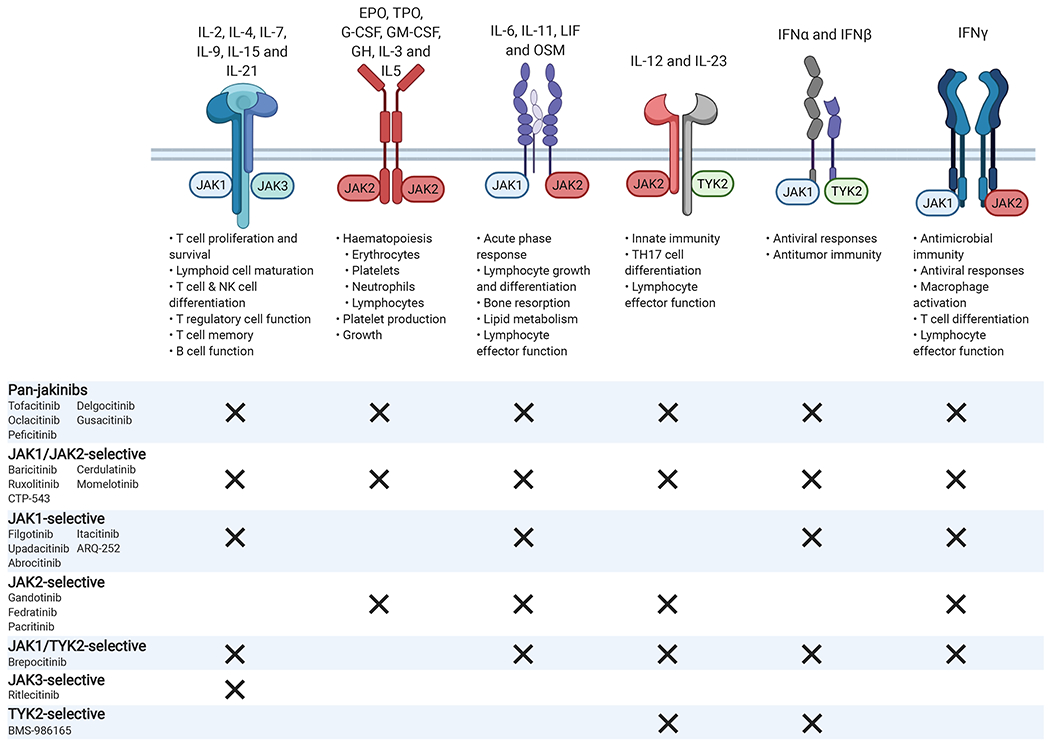Figure 1:

Type I and type II cytokine receptors associate with different members of the Janus kinase family (JAK1, JAK2, JAK3, and TYK2) in order to transduce intracellular signals. Selective blockade of specific JAK molecules should inhibit specific biologic actions while allowing other JAK-dependent cytokines to signal normally. For example, by selectively inhibiting JAK1, the adverse events related to JAK2 inhibition such as anemia and neutropenia should be avoided. JAK3 mediated signaling, which is associated exclusively with the common γ-chain receptor, should also be unaffected, sparing T, B, and NK (natural killer) cell function. JAK, Janus kinase; TYK, tyrosine kinase; IL, interleukin; EPO, erythropoietin; TPO, thrombopoietin; granulocyte colony-stimulating factor (G-CSF); GM-CSF, granulocyte–macrophage colony-stimulating factor; GH, growth hormone; OSM, oncostatin M; IFN, interferon. Created with BioRender.com
